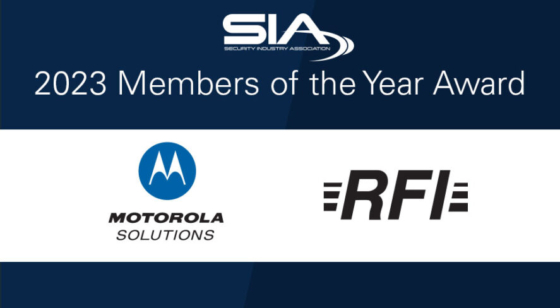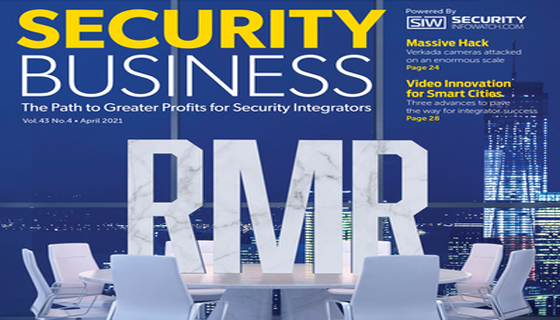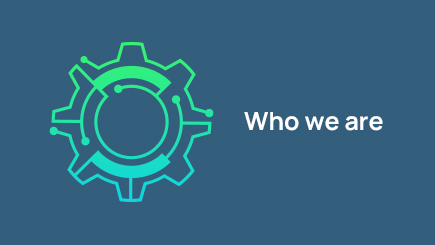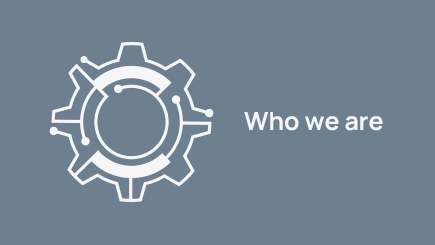The Changing Workforce
Solving Security’s Workforce Conundrum
Market indicators that place the electronic security industry on a robust growth trajectory in a post-pandemic world are manifold. From mass shootings to a rise in terrorist attacks, chronic vandalism and cyber threats, the need to protect people, property and infrastructure has never been greater. Extensive deployment of advanced technologies across numerous verticals is helping end users not just meet their security goals and requirements, but achieve essential business efficiencies as well.
Demand for these products and integrated systems will remain high for the foreseeable future. Far more difficult to ascertain is whether or not the industry’s ecosystem of service providers and suppliers will conquer the one pervasive threat that could derail all that long-term momentum. No, the alpha villain is not supply chain chaos. Even more ominous to the industry realizing its full potential is the scarcity of talent.
A confluence of social dynamics has created a critical juncture for an industry that finds itself struggling to fill skilled labor, including technicians, project managers and engineers, as well as executive roles in its workforce. Installing security contractors and manufacturers alike face overlapping challenges, ranging from baby boomers who are set to leave the industry en masse to the pandemic-fueled “Great Resignation,” among other factors that are draining talent pools for employee recruitment and creating higher turnover.
“It is definitely a significant concern,” says Don Erickson, CEO of the Security Industry Association (SIA). “We’re not seeing the next generation coming in as quickly as possible. Our industry is competing against every other industry for talent. And every other industry is focused on finding emerging leaders and younger talent.”
“Our industry is competing against every other industry for talent. And every other industry is focused on finding emerging leaders and younger talent. ”
— Don Erickson, Security Industry
A dearth of young talent is exacerbated by the industry’s lack of diversity. Despite the emergence of successful initiatives such as SIA’s Women in Security Forum — which endeavors for gender parity in the workplace through professional development — the participation rate among women remains lopsided when compared to white men. The disparity is especially pronounced at installation companies. For example, the “security and fire alarm systems installers” segment tracked by the U.S. Bureau of Labor Statistics shows female participation at less than 5 percent. Representation is also negligible among Black and Asian employees at 2.3 percent and 2.6 percent, respectively. Hispanic or Latino workers are better represented at 32.1 percent.
Navigating diversity and inclusion programs while recruiting a steady pipeline of upcoming generations will be essential to the overall health of the security industry. The urgency is not lost on forward-thinking companies that recognize their viability to compete in the marketplace is dependent on winning the competition for the best talent. But the work does not stop there. To succeed in the fast-evolving labor market, companies are simultaneously adapting to hybrid and work-from-home (WFH) polices. Implementing remote onboarding and professional development — in addition to maintaining culture — are also challenging organizations.
For a deeper understanding of the forces — and related implications — that are driving all this change in today’s workforce, SDM spoke with more than a dozen organizations from across the industry landscape. Ahead they discuss how their companies are pivoting to secure future success by remaining relevant to customers and employees alike amid multiple adversities and gale force headwinds.
Defining Diversity & Inclusion
It’s important for company leaders to fully grasp the meaning of diverse hiring before they can expect to implement it, explains Leah Knight, director, global talent acquisition at Snap One, a Charlotte, N.C.-based manufacturer and distributor of A/V, control and security equipment.
“Diversity isn’t just the color of your skin or your gender. It is so many different things. We need to be open and understanding of people coming from different industries and coming from different backgrounds.”
— Leah Knight, Snap One
“Diversity isn’t just the color of your skin or your gender. It is so many different things. We need to be open and understanding of people coming from different industries and coming from different backgrounds,” she says. “That is what makes up diversity.”
Knight works closely on talent acquisition with the company’s Diversity, Equity and Inclusion (DEI) council, which Snap One formed about three years ago. To source candidates, all jobs openings at the company are posted to the website Professional Diversity Network. Snap One also looks internally to identify those team members who are considered top performers.
“Tapping into our internal network is something that we’ve definitely been doing,” Knight says. “We are trying to do a better job of promoting our referral program and internal opportunities to get our diverse team members that we already have on staff to be referring other diverse candidates.”
Diversity at senior levels in an organization is especially key to stimulate recruiting and retention efforts, Knight says.
“One of the biggest things is having diversity at senior levels and making sure that people have mentors and somebody to look up to who is similar to them,” she says. “That connection can be aspirational for other employees. Having leadership and having people throughout all different areas of the business be diverse is really important to help with retention.”
Eddie Reynolds, co-founder and CEO of Irvine, Calif.-based Iluminar — the only Black woman-owned manufacturer of security hardware in the world — echoes a similar sentiment. She believes creating a workplace that is viewed as truly open by the rank and file may be the industry’s biggest challenge.
“In the industry, new and potential hires see older white men in all positions of power,” Reynolds says. “Many of them come away feeling intimidated, because they feel like those in leadership don’t look like them. It’s important to practice what we preach and hire and promote people from all backgrounds to influential positions.”
Systems integrator Convergint, Schaumburg, Ill., is on the forefront of incorporating diversity and inclusion principles as a centerpiece of its organization and culture. The company has established various affinity groups for different underrepresented colleagues to encourage professional development opportunities, promote cultural understanding, and recruit and retain talent. These include groups for women, Asian Americans and Pacific Islanders (AAPI), Latinx, Black, LGBTQ+, disabled, veterans and Indigenous colleagues.
“Our affinity group members actively participate in college career fairs to recruit diverse talent for the Convergint Development Program,” explains Yaruba Tate, vice president of inclusion and diversity (I&D). “This program is a six-month, entry-level rotational training program for recent engineering, IT or business graduates, and it provides a structured plan to prepare participants for an exciting sales or operations role with Convergint. Specific skills are developed through supervisor and mentor training as well as formal training courses.”
The program focuses on providing industry knowledge and business practices including product training, system design, system installation, products and services provided, estimates and proposals, among other facets. Ensuring that job descriptions speak to diverse applicants while being specific about the skillsets required can be essential to building a more diverse workplace, Tate explains.
“Leading with sensitive, thoughtful and inclusive language demonstrates that you are an inclusive workplace that considers all applicants regardless of gender, background, disability or status,” he says.
Publicly sharing I&D policies, initiatives and ongoing activity can demonstrate an organization’s commitment to inclusion and diversity, he adds. “This practice is essential to attracting diverse talent and promoting company culture.”
Striving to Build Diversity Through Awareness
A significant hurdle many companies face to building a more diverse workforce is the general lack of awareness about the electronic security industry. In other industries, such as HVAC or electrical contracting, there is a broader pool of potential employees to hire due to society’s common knowledge of what is involved in performing those trades, explains Dee Ann Harn, president and CEO of RFI, a security integrator based in San Jose, Calif., and featured on this month’s cover.
A concerted effort to forge outreach and awareness campaigns will be key to driving younger, more diverse job candidates into the security industry pipeline, she says.
“We have the potential to find and develop more diverse employees if we start to build relationships with trade and high schools in our local communities. This next generation is more inclined to turn to trade schools to avoid accumulating student debt and to develop skills that translate directly into jobs,” Harn says. “Our opportunity as an industry is to catch these individuals before they go down another trade’s path. If we can successfully engage within our local communities, we have better potential to build a workforce more reflective of the communities in which we serve.”
The challenge comes in having the internal resources dedicated to educating potential candidates about the industry on a larger scale, Harn says. “If we can get in front of 10 potential candidates, we might get one person to interview. But if we can get in front of 100 candidates, we can potentially get 10 to interview. Our chances to bring new people on board grow.”
Christine Lanning, president and co-founder of Integrated Security Technologies (IST), a commercial integrator based in Hawaii, also advocates proactively seeking diverse candidate pools. That means finding potential employees in non-traditional ways, she says.
“This could be attending a veteran’s job fair, attending a local high school class to talk about the security technology industry, or going to a cultural organization meeting like the Japanese Chamber of Commerce,” she says.
The inclusion piece to the puzzle comes from providing equitable access to job opportunities, Lanning adds. “For us this looks like creating space for an individual that worked in the hospitality industry, for example; perhaps in banquets or finance, and training them into an account manager role in the security industry because we see their potential to deliver exceptional customer service.”
Amber Weaver, vice president, talent acquisition, ADT, Boca Raton, Fla., explains the company is also focused on finding new ways to attract and retain high-quality candidates that help it take steps toward creating a diverse, balanced and technically expert workforce. To help draw more candidates into its talent pipeline, ADT has created a variety of outreach programs, such as partnering with Recruit Military, an organization that helps veterans get into the workforce. Other initiatives include an apprenticeship technician program through the ADT Commercial business, as well as building out a full-scale internship program.
“When we think about entry-level talent, we’re investing in our future success and potentially discovering future leaders,” Weaver says. “ADT currently offers several internship opportunities; however, we’re working to be more intentional with who we market opportunities to and the institutions and student associations we choose to work with, including Hispanic-Serving Institutions and Historically Black Colleges and Universities [HBCUs].”
Weaver comments it is imperative that companies not only focus on recruitment and retention, but also on the development of diverse talent. In an effort to continue to develop its team members, she explains ADT has launched several new initiatives, including an Inclusive Diversity and Belonging Council where members are responsible for developing near and long-term enterprise initiatives for the advancement of diversity and inclusion. Another program, Business Employee Resource Groups (BERGs), are led and participated in by employees who share a characteristic — be it gender, ethnicity, religious affiliation, lifestyle or interest. The groups bring together colleagues for insights, support, career development and community engagement.
“We’re always looking to enhance both the sourcing and recruitment process to ensure our process remains inclusive,” Weaver says. “One way we do this is through diverse slate hiring for director-plus roles. I think it’s important to not just utilize best practices, but to think outside the box and recruit in a way that also fits our business, mission and vision. This is where our business employee groups come in. Our BERGs are doing some amazing work at ADT and we’re beginning to partner to learn how we can be more effective in our diverse hiring efforts.”
Continue Reading at https://www.sdmmag.com/articles/101067-solving-securitys-workforce-conundrum












